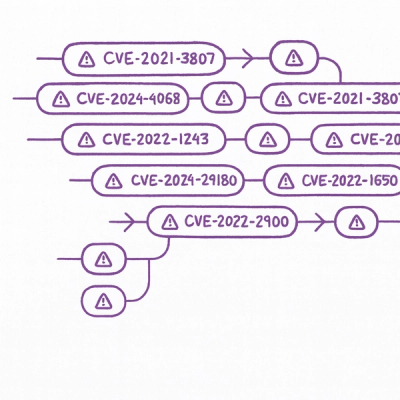
Security News
New Website “Is It Really FOSS?” Tracks Transparency in Open Source Distribution Models
A new site reviews software projects to reveal if they’re truly FOSS, making complex licensing and distribution models easy to understand.
Devise-Basecamper was built to allow users of Devise to implement "Basecamp" style subdomain scoped authentication with support for multiple users. There are a lot of great tutorials out there on doing subdomain authentication with devise, but none of them seemed to fit my particular use cases. So I took a stab at extending the functionality of Devise, which has been a great Gem, and community, to work with.
User authentication that is scoped to an account, which is identified by the subdomain of the URL. This allows for better multi-tenancy, as well as for re-use of usernames under different accounts.
Add this line to your application's Gemfile:
gem 'devise-basecamper'
And then execute:
$ bundle
Or install it yourself as:
$ gem install devise-basecamper
To make Devise-Basecamper work properly, there are several steps that need to be taken to adjust the "out-of-the-box" behavior of Devise. None of the changes require doing any "hacking" of Devise, as they are all steps/actions and configuration options that are already a part of Devise itself.
Open the Devise initializer file, which can be found in config/initializers/devise.rb. Add :subdomain to the
config.request_keys array like below.
config.request_keys = [:subdomain]
This will make sure to pass the subdomain value from the request to the appropriate Devise methods.
Which ever model you would like to have subdomain based authentication scoping on, just add :basecamper to your
included devise modules.
class User
include Mongoid::Document
include Mongoid::Timestamps
devise :database_authenticatable,
:recoverable,
:trackable,
:validatable,
:basecamper
...
end
By default, Devise-Basecamper assumes that your devise model "belongs to" an Account and has a field called account_id
as the foreign key to that table. Devise-Basecamper also assumes that the subdomain field exists in your Account model
and is called subdomain. Now that's a lot of assumptions, but never fear...they can be changed.
If you need to change any of these assumptions, you can do so by calling the devise_basecamper method in your devise
model.
class User
include Mongoid::Document
include Mongoid::Timestamps
devise :database_authenticatable,
:recoverable,
:trackable,
:validatable,
:basecamper
devise_basecamper :subdomain_class => :my_parent_class,
:subdomain_field => :my_field_name,
:scope_field => :field_to_scope_against
...
end
The devise_basecamper method has 3 options that can be set: subdomain_class, subdomain_field and scope_field.
subdomain_class
This option allows you to specify which model your subdomains are defined in. By default, devise_basecamper assumes this
to be an Account object.
subdomain_field
This option allows you to specify the name of the field within the subdomain_class that the subdomain string is stored
in. By default, devise_basecamper assumes this to be subdomain.
scope_field
This option allows you to specify the name of the field within the devise model (e.g. - User) stores the ID of the account
you want to create a scope against. By default, devise_basecamper assumes that this is a field called account_id.
If your application follows the assumptions, you DO NOT need to define any of these options.
You can configure multiple models accordingly just as you can in Devise. If you have a Devise model that does not need the additional features offered by Devise-Basecamper, simple do not include the module. Devise will work just as expected.
You will need to add a helper method to your application controller, I would also recommend the validation for dealing with subdomains that do not belong to an account.
Helper Methods
class ApplicationController < ActionController::Base
protect_from_forgery
helper_method :subdomain, :current_account
before_filter :validate_subdomain, :authenticate_user!
private # ----------------------------------------------------
def current_acount
# The where clause is assuming you are using Mongoid, change appropriately
# for ActiveRecord or a different supported ORM.
@current_account ||= Association.where(subdomain: subdomain).first
end
def subdomain
request.subdomain
end
# This will redirect the user to your 404 page if the account can not be found
# based on the subdomain. You can change this to whatever best fits your
# application.
def validate_subdomain
redirect_to '/404.html' if current_account.nil?
end
end
Devise provides the Recoverable module to implement standard password recovery practices. This module needs a little help working with the basecamp style authentication, making sure to find the correct user account, under the correct subdomain.
To implement subdomain-based lookups using the devise Recoverable module, you will need to uncomment the reset_password_keys section in devise.rb.
This should be around line 158 in your devise.rb file. Then update the line to look like the following:
# ==> Configuration for :recoverable
#
# Defines which key will be used when recovering the password for an account
config.reset_password_keys = [ :email, :subdomain ]
You can add whatever field name you would like here, but :subdomain is probably the best choice.
Next we will need to override the default view for the passwords controller. Follow the directions from the
devise readme if you don't know how to do this. Find the proper view
equivelant in your application for devise/passwords/new.html.erb and add a hidden field for the subdomain value.
You will then want to default its value to the subdomain we are scoping to. This value will then be included in the
form submit and processed properly by devise-basecamper.
Support has also been added for confirmation emails thanks to juliobetta.
Example form:
<h2>Forgot your password?</h2>
<%= render "flashes" %>
<%= simple_form_for resource, :as => resource_name, :url => password_path(resource_name), :html => { :method => :post } do |f| %>
<%= hidden_field_tag 'user[subdomain]', subdomain %>
<%= f.input :email %>
<%= f.button :submit, "Send me reset password instructions" %>
<% end %>
<%= render "devise/shared/links" %>
NOTE Notice that the hidden field is named 'user[subdomain]'. This is absolutely necessary to make sure that the value is passed to the handling devise methods. However, user is NOT the hard rule, use whatever the appropriate model name is for your application.
Devise-Basecamper has very minimal interaction with your data layer, however it uses the same orm_adapter gem as Devise
and should work just fine with all of the ORM's supported by Devise.
MORE TO COME
If you would like to contribute to this project, please fork it and submit pull requests with your code changes. I'm pretty much making updates to this as needed for my own projects right now, so it doesn't change super often and help would definately be appreciated.
MIT License. Copyright © 2012 Digital Opera, LLC. www.digitalopera.com
FAQs
Unknown package
We found that devise-basecamper demonstrated a not healthy version release cadence and project activity because the last version was released a year ago. It has 2 open source maintainers collaborating on the project.
Did you know?

Socket for GitHub automatically highlights issues in each pull request and monitors the health of all your open source dependencies. Discover the contents of your packages and block harmful activity before you install or update your dependencies.

Security News
A new site reviews software projects to reveal if they’re truly FOSS, making complex licensing and distribution models easy to understand.

Security News
Astral unveils pyx, a Python-native package registry in beta, designed to speed installs, enhance security, and integrate deeply with uv.

Security News
The Latio podcast explores how static and runtime reachability help teams prioritize exploitable vulnerabilities and streamline AppSec workflows.